The Intel Core Ultra 7 155H Review: Meteor Lake Marks A Fresh Start To Mobile CPUs
by Gavin Bonshor on April 11, 2024 8:30 AM ESTASUS Zenbook 14 OLED UX3405MA: Encoding Performance
Typically, in previous notebook reviews, we lump basic compute and general performance in with our system performance summary. As we advance into 2024 and beyond, we're splitting the sections up with more data points and workload testing. This gives a more holistic view of performance, not just from a usage standpoint, such as storage and battery, but also from memory and other compute-related variables that can substantially affect compute performance.

CPU-Z Screenshot of the Intel Core Ultra 155H processor
For this review, we have included the AMD Ryzen 9 7940HS, which includes the same Radeon 780M integrated graphics, along with the Ryzen 5 8600G, which uses the AMD Phoenix mobile architecture but is adopted for desktops. This allows us to show more data points for our review of Intel's Meteor Lake-based Core Ultra 7 155H to see where performance lies.
Despite including AMD's Phoenix-based Ryzen 8000G APUs in our results, as we expand our list of notebooks tested, we'll have more effective and comparable data points in the future. To add more reference, all of the chips have been tested with Windows 11 22H2.
Encoding Performance
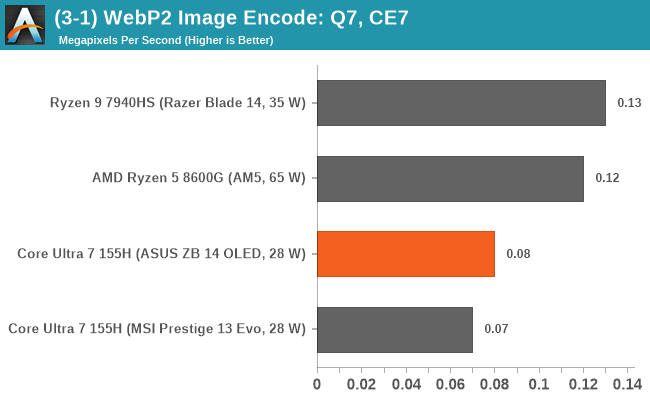
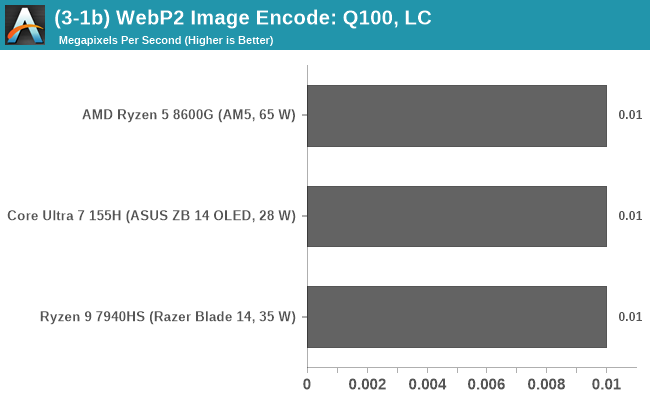
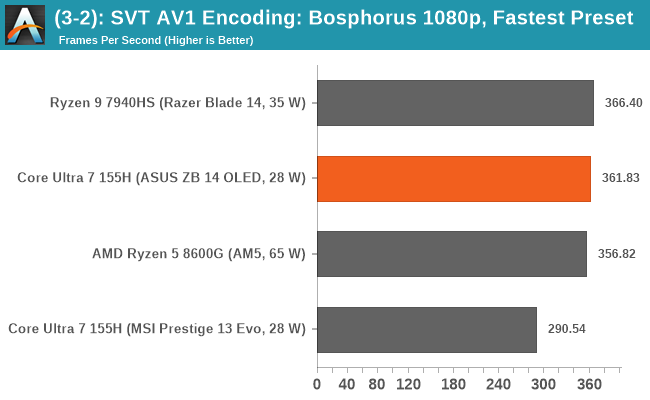

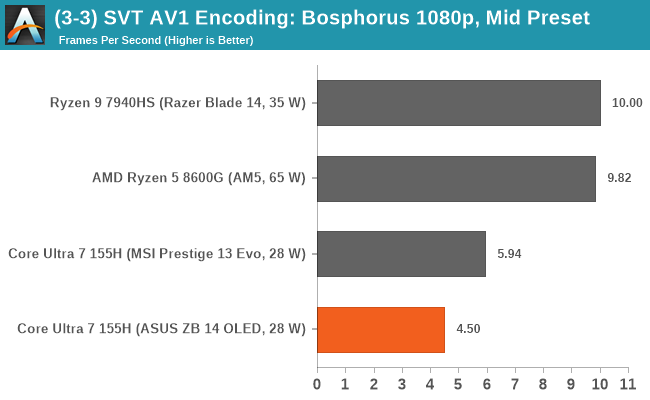
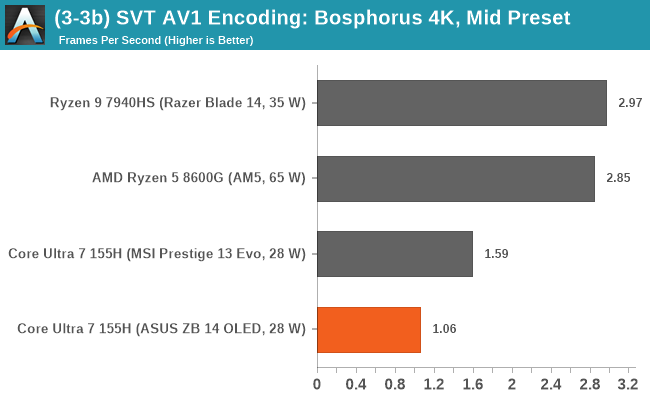
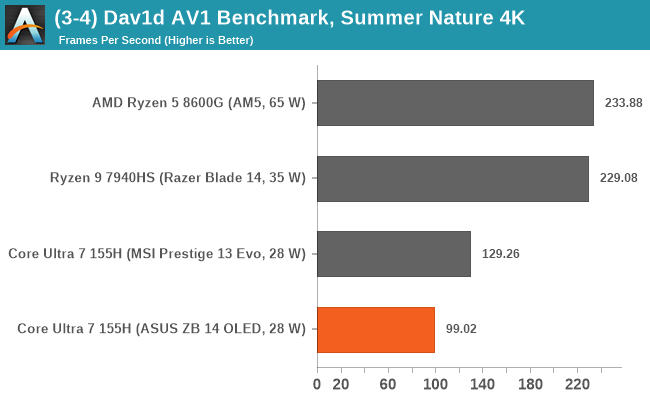
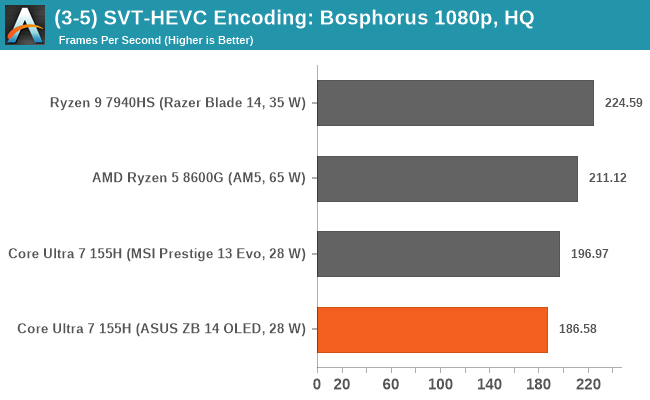

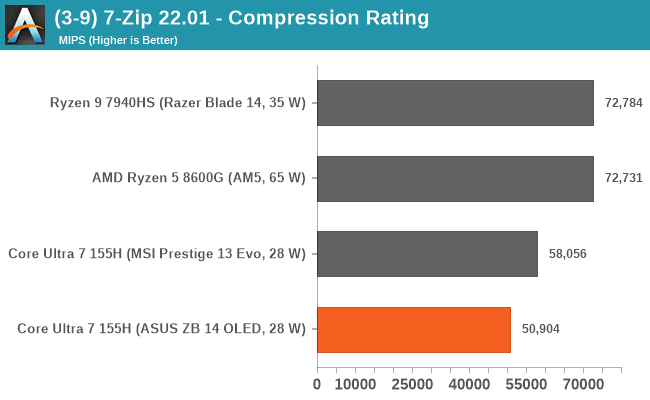
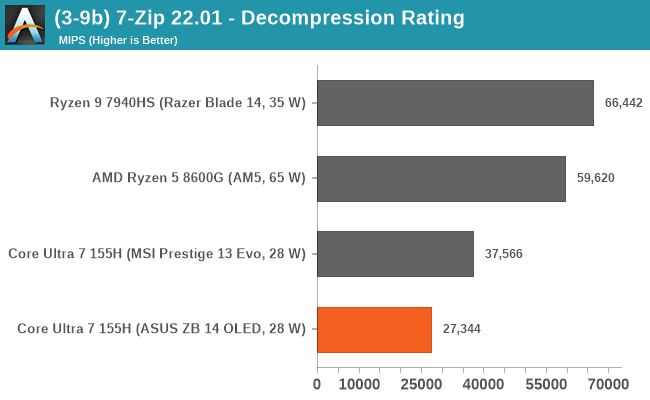
Looking at how well the Intel Core Ultra 7 155H processor within the ASUS Zenbook 14 OLED UX3405MA performs in encoding tasks, we can see that it's a mixed bag. It shows competitive performance in our WebP2 image Encode test with maximum quality and strong SVT AV1 encoding performance at 1080p on the fastest preset, but things in the other tests aren't as favorable.
Even compared to the MSI Prestige 13 Evo A1MG with the same Core Ultra 7 155H processor, the ASUS Zenbook 14 OLED UX3405MA lags behind in our 7-Zip compression and decompression tests, as well as the Dav1d AV1 benchmark compared to the other chips on test. Even looking at the results of the MSI model, encoding performance with the Intel Core Ultra 7 155H is a little underwhelming compared to the Ryzen 9 7940HS.










69 Comments
View All Comments
mode_13h - Wednesday, April 17, 2024 - link
I wonder if the reason they did it that way is to do with how programs which explicitly set affinity typically do so. The rationale might be something like:1. Make single-threaded programs and the main thread of multi-threaded programs fast.
2. For multi-threaded programs, the next set of threads should be efficiency-optimized. Reply
Marlin1975 - Thursday, April 11, 2024 - link
So it uses more power and still loses in most things to the AMD chipwow, I thought intel was getting better and this is all they have? Let alone AMDs newer Zen5 chips are coming soon and will only move their lead further. Reply
Pheesh - Thursday, April 11, 2024 - link
well, it definitely isn't using more power, perhaps you skipped over the battery/power section? A lot less power during general office type usage, despite a thinner chassis that can deal with much less thermals etc. But the laptops being compared are so vastly different this whole review seems kinda....meaningless? The razer 14 is a 4lb gaming laptop, with thermals to boot, in a comparatively massive chassis. And it's being compared against a macbook air esque form factor. The reader isn't gaining much from a comparison to another processor that does not exist in a comparable form factor/power envelope. ReplyRyan Smith - Thursday, April 11, 2024 - link
Ultimately that's down to AMD and Intel. One sampled a 42W notebook for their mobile CPU launch, the other sampled a 28W notebook. We've equalized things as much as we can, but we can only test what we have (or in the case of the MSI, get our hands on). Replytipoo - Thursday, April 11, 2024 - link
M3 would be a great comparison point ReplyTheinsanegamerN - Thursday, April 11, 2024 - link
M3 is an entirely different arch, in a different OS ecosystem, with its own special API. You're comparing apples and giraffes. Replymode_13h - Monday, April 15, 2024 - link
For those apps which run on both machines, it's absolutely a valid comparison. If all the apps you need are supported on both, then it's useful to see how they compare because you really could pick either one. Replymode_13h - Monday, April 15, 2024 - link
Toms' review includes M3, however they only have a few benchmarks. It's not as comprehensive a review as this one.https://www.tomshardware.com/laptops/ultrabooks-ul... Reply
clemsyn - Thursday, April 11, 2024 - link
Thanks for the review. Looks like Intel is waking up and going the right direction. I just hope its not too late (which I think it is). Replymeacupla - Thursday, April 11, 2024 - link
135H has 8 Xe cores, not 7 Reply